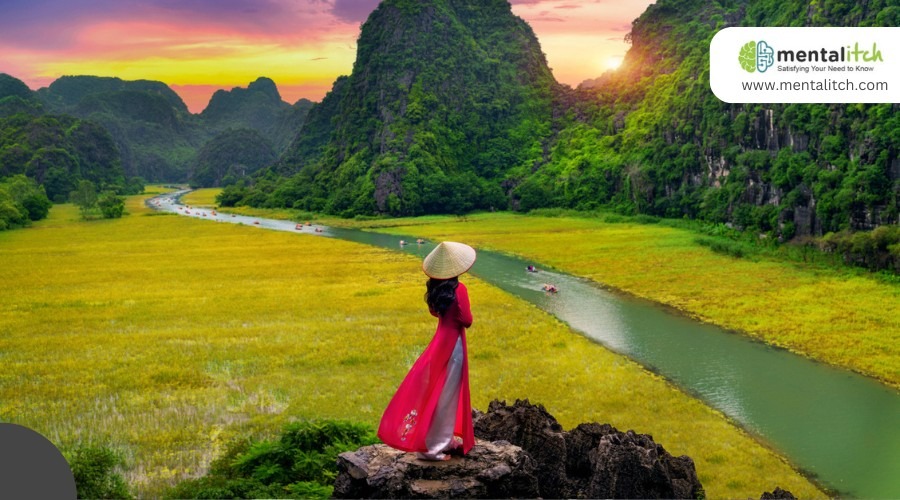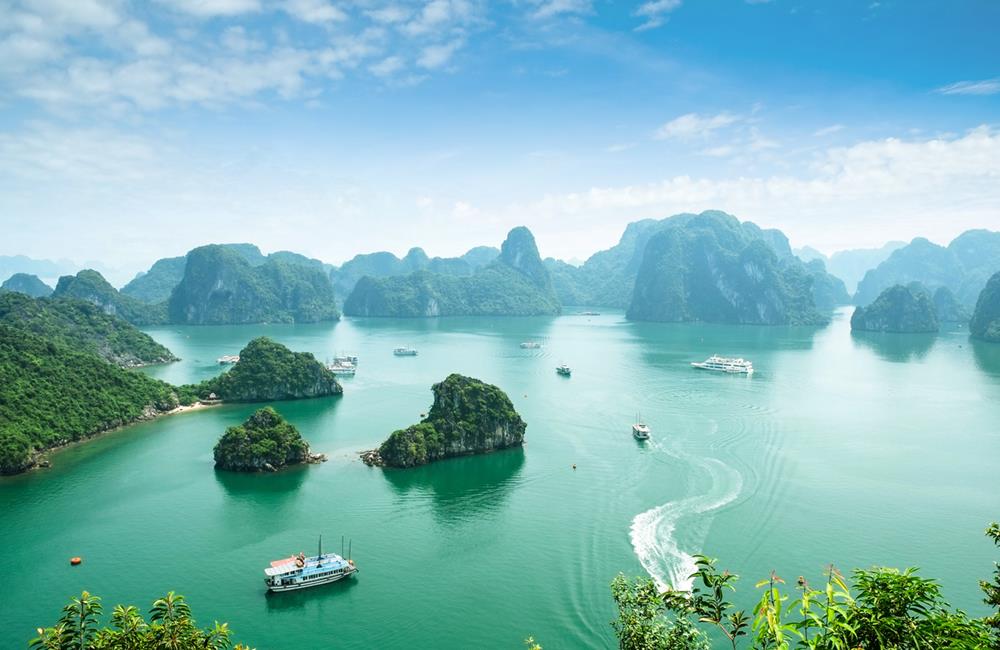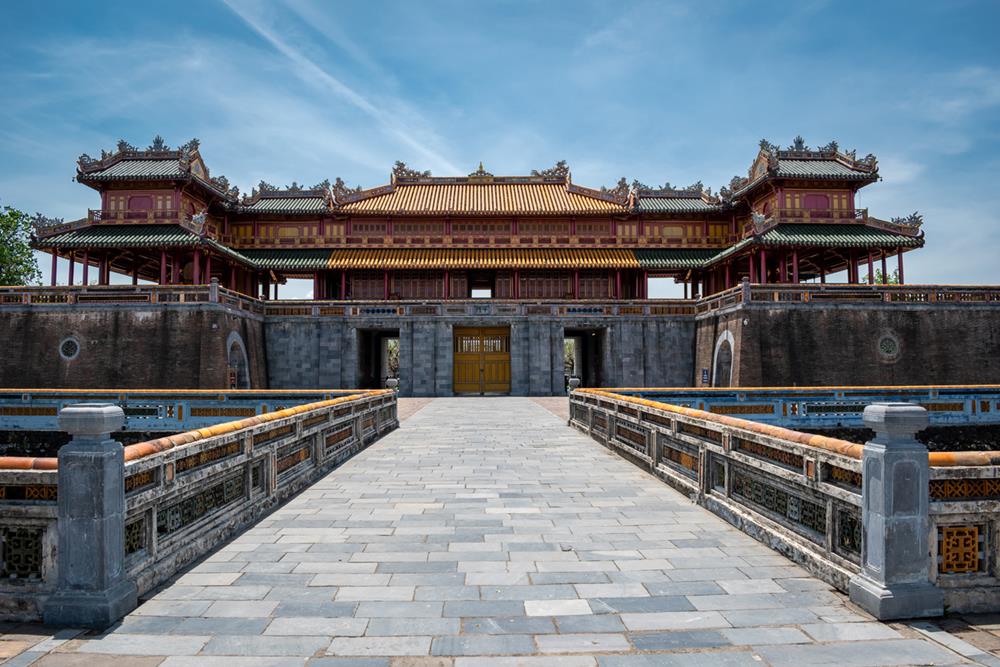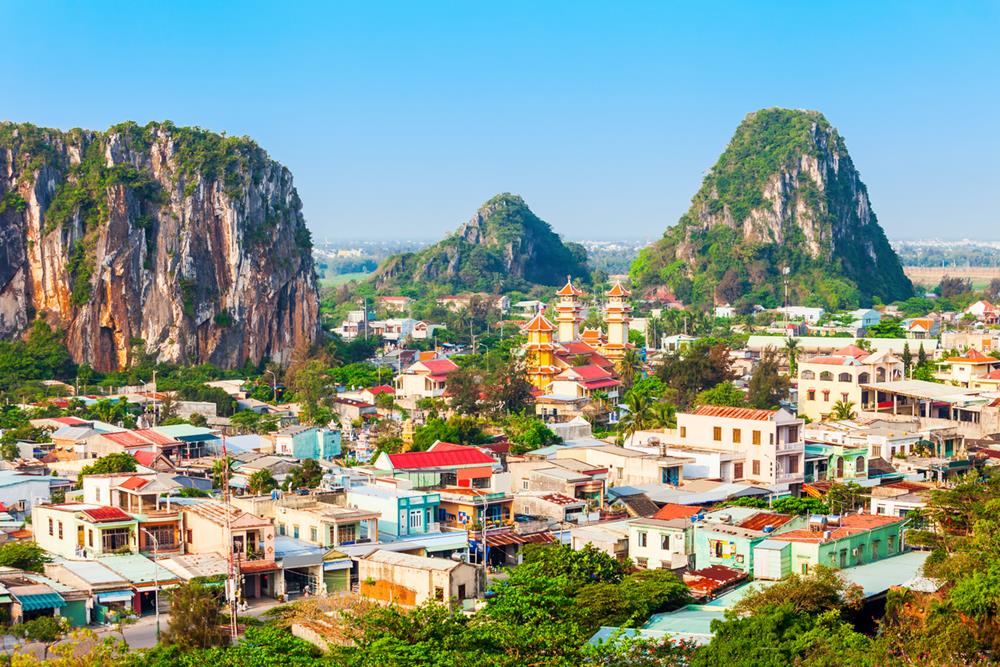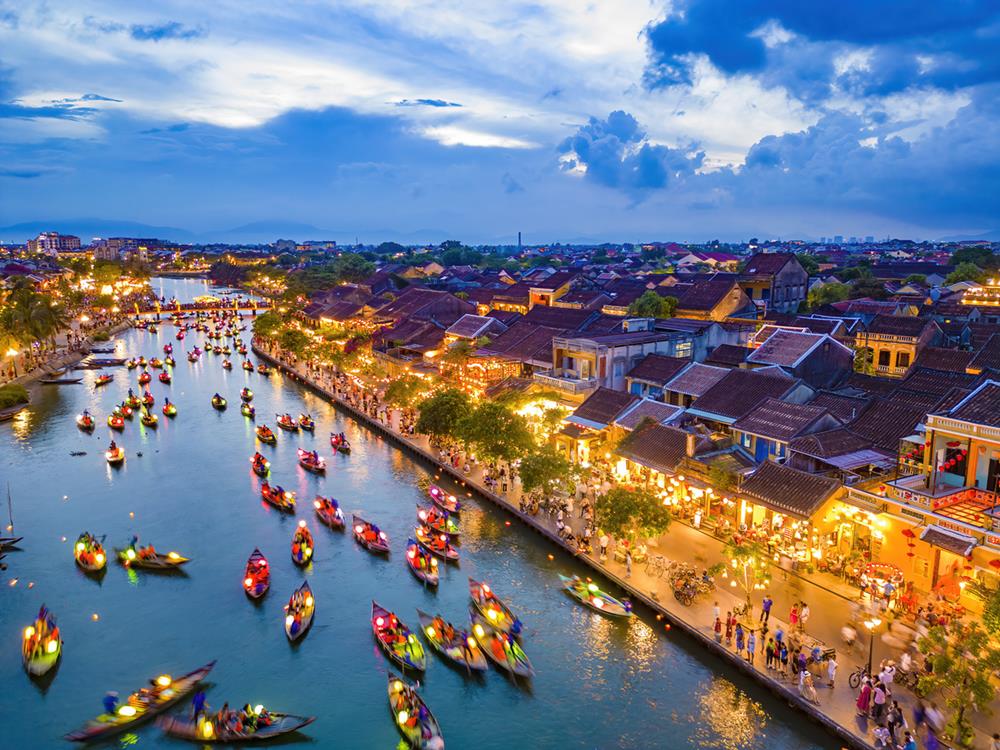Vietnam is a country full of wonders, from bustling cities to peaceful countryside, each corner telling its own story. It’s a place where history, nature, and culture come together, making it a must-visit for travelers.
In this article, we’re going to take a closer look at five special places in Vietnam that stand out. Whether you’re a fan of exploring old streets, enjoying stunning landscapes, tasting delicious foods, or learning about history, Vietnam has something for everyone. Let’s get ready to discover the top 5 destinations in Vietnam and find out what makes them so unique.
Hanoi – The Heart of Vietnamese Culture
Hanoi, the capital city of Vietnam, features the enduring spirit and rich culture of the Vietnamese people. It’s a place where the past and present coexist, offering visitors a deeply textured experience of the country’s heritage and contemporary life.
A Glimpse into History and Heritage
- Hoan Kiem Lake and Ngoc Son Temple: At the city’s heart lies the tranquil Hoan Kiem Lake, a focal point for locals and tourists seeking respite from the bustling city life. The lake is home to Ngoc Son Temple, accessible by an iconic red bridge, offering a peaceful retreat and a chance to delve into local legends.
- The Old Quarter: A labyrinth of narrow streets and alleys, the Old Quarter is the epitome of Hanoi’s historical charm. Each street here is named after the goods traditionally sold there, from silk to silver. Walking through the Old Quarter is like traveling back in time, with its well-preserved shop houses and the hum of daily life.
Culinary Delights
Hanoi is a food lover’s paradise, offering a variety of flavors that reflect the complexity of Vietnamese cuisine. The city is renowned for its street food, with dishes that balance sweet, salty, sour, and hot flavors in perfect harmony.
- Pho: No visit to Hanoi is complete without trying Pho, the quintessential Vietnamese noodle soup. This dish is a breakfast staple, made with either beef or chicken, rice noodles, and a flavorful broth, garnished with fresh herbs.
- Street Food Tours: For the adventurous eater, joining a street food tour can be a great way to explore Hanoi’s culinary landscape. These tours often visit hidden gems and offer insights into the food’s cultural significance.
Cultural Etiquettes and Tips for Travelers
- Best Time to Visit: The best times to visit Hanoi are during the spring (March to April) and autumn (September to November) months, when the weather is pleasant and the city is vibrant with activities.
- Cultural Etiquettes: Visitors are encouraged to dress modestly, especially when visiting temples and other religious sites. A respectful attitude towards local customs and traditions is appreciated.
Halong Bay – Vietnam’s Crown Jewel
Located in the northeast of Vietnam, Halong Bay is a mesmerizing landscape of emerald waters and thousands of towering limestone islands topped with rainforests. It’s a natural wonder that not only captivates the eye but also the soul, offering a serene escape into nature’s masterpiece.
Exploring the Limestone Karsts and Islands
Halong Bay’s beauty is unparalleled, with its majestic limestone karsts and islands rising from the water, creating a mystical scene that changes with the light and weather. These formations, some of which are hundreds of meters high, have been sculpted over millions of years by the elements.
Cruise Tours: The Best Way to Experience Halong Bay
- Choosing the Right Cruise: With a variety of cruise options available, from day trips to overnight stays, selecting the right cruise can enhance your Halong Bay experience. Consider factors like the route, length of the cruise, and onboard amenities.
- Activities on Board and Beyond: Most cruises offer a range of activities, including kayaking around the karsts, visiting caves like Sung Sot (Surprise Cave), and even participating in cooking classes. There’s something for everyone, whether you’re seeking adventure or relaxation.
UNESCO World Heritage Status and Conservation Efforts
Halong Bay is not just a natural wonder, but also a UNESCO World Heritage Site recognized for its outstanding geological and geomorphological value. With this status comes a responsibility to protect and preserve the area. Visitors are encouraged to be mindful of their environmental impact, participating in conservation efforts by minimizing waste and respecting wildlife.
Advice for Visitors: Making the Most of Your Journey
- Best Time to Visit: The ideal times to visit Halong Bay are during the spring (March to May) and autumn (September to November) months when the weather is mild and the skies are clear.
- Packing Tips: For those planning to explore the caves or indulge in water activities, comfortable shoes and swimwear are a must. Also, don’t forget to bring sunscreen and a hat to protect against the sun.
Hue – A Journey Through Vietnam’s Imperial History
Hue, once the imperial capital of Vietnam, is a city that resonates with the echoes of its past. Situated on the banks of the Perfume River, this city is a monumental tribute to Vietnam’s regal history, home to ancient temples, palaces, and tombs that speak volumes of the country’s cultural and historical richness.
The Imperial City: A Glimpse into Royal Life
The heart of Hue is its Imperial City, a vast complex protected by fortified walls, moats, and gateways, leading into palaces, temples, and gardens once reserved for the royal family. This UNESCO World Heritage Site offers a fascinating insight into the lives of Vietnam’s emperors.
Majestic Tombs and Spiritual Sites
- Tombs of the Emperors: Hue is famous for its royal tombs, each uniquely reflecting the personality and reign of the emperor it commemorates. Notable sites include the Tomb of Tu Duc, with its serene lakes and pine forests, and the grandiose Tomb of Khai Dinh, blending Vietnamese and European architectural styles.
- Thien Mu Pagoda: Overlooking the Perfume River, the iconic seven-story Thien Mu Pagoda is a symbol of Hue. It’s not only a significant religious site but also offers breathtaking views and a peaceful retreat from the city.
Cultural Heritage and Traditions
Hue is also a custodian of Vietnamese culture, from the intricate art of royal court music, recognized by UNESCO as a Masterpiece of the Oral and Intangible Heritage of Humanity, to the culinary traditions that give a taste of the royal cuisine, distinct in its sophistication and flavors.
Tips for Travelers: Embracing Hue’s Historic Splendor
- When to Visit: The best time to explore Hue is from January to April when the weather is cooler and the rain is minimal, making it ideal for visiting the outdoor historical sites.
- Exploring Respectfully: Many of Hue’s attractions are sacred or solemn sites. Visitors are encouraged to dress modestly and behave respectfully, keeping in mind the cultural significance of the places they visit.
- Navigating the City: While many of Hue’s landmarks are within walking distance of each other, renting a bicycle or a scooter can be a delightful way to see the city and its surroundings, offering the freedom to explore at your own pace.
Da Nang – Modern Vibes and Natural Beauty
Da Nang, a coastal city in central Vietnam, stands as a testament to the harmonious blend of modernity with natural beauty. It’s a city that thrives in the present while holding onto its rich cultural roots, offering visitors a vibrant mix of experiences from stunning beaches to contemporary landmarks. In addition, you can see the gigantic statue of Lady Buddha, which is almost 70 meters high.
The Marvels of Modern Da Nang
- Dragon Bridge: The Dragon Bridge is not only an engineering marvel but also a symbol of Da Nang’s dynamic growth. This iconic bridge, shaped like a dragon, lights up at night in a spectacular display of colors and even breathes fire and water on weekends, captivating both locals and tourists alike.
- My Khe Beach: Known for its soft white sands and crystal-clear waters, My Khe Beach is recognized as one of the most picturesque beaches in Vietnam. It’s a perfect spot for swimming, sunbathing, and enjoying water sports, with a backdrop of the city’s skyline.
Cultural and Natural Explorations
- Marble Mountains: Just outside Da Nang, the Marble Mountains are a cluster of five limestone and marble hills, each representing one of the earth’s elements. The site is dotted with caves, tunnels, and Buddhist sanctuaries, offering a blend of natural beauty and spiritual serenity.
- Ba Na Hills: A visit to the Ba Na Hills feels like stepping into a fairy tale. This resort area is home to the Golden Bridge, held aloft by two giant hands, and offers panoramic views of the surrounding countryside. Its cool climate and European-inspired architecture, including a replica of a French medieval village, make it a unique escape from the tropical heat.
Embracing Da Nang’s Lively Atmosphere
Da Nang’s night markets and riverside promenade come alive after dark, offering a glimpse into the city’s bustling social life. The Han River Cruise is another must-do, providing a different perspective of the city’s illuminated bridges and skyscrapers while gliding along the calm waters.
Travel Tips for Da Nang Visitors
- Best Time to Visit: The ideal months to visit Da Nang are from February to May when the weather is comfortable, there is minimal rainfall, and it is perfect for outdoor activities and exploring the city’s attractions.
- Getting Around: Da Nang is well-suited for motorbike exploration, offering visitors the freedom to discover hidden gems at their own pace. Public transportation and taxis are also readily available for those looking for convenience.
Hoi An – A Glimpse into Vietnam’s Living Heritage
Hoi An, with its well-preserved ancient town, exudes a timeless charm that transports visitors back to a bygone era. This UNESCO World Heritage Site, nestled on Vietnam’s central coast, is celebrated for its beautifully maintained architecture, reflective of the mix of influences that have come together over the centuries, from Chinese shop houses to French colonial buildings.
The Ancient Town
- Japanese Covered Bridge: One of Hoi An’s most iconic landmarks, this bridge was built in the 16th century by the Japanese community and stands as a symbol of peace and connection between cultures. Its structure and ornate gate are a testament to the town’s historical depth and cultural fusion.
- Historic Houses and Museums: Walking through the ancient town, visitors encounter a series of historic houses and museums that tell the stories of Hoi An’s past. The Tan Ky House, with its centuries-old architecture and original artifacts, offers insights into the lifestyle of a prosperous merchant family.
Cultural Experiences and Nightly Illuminations
Hoi An is not just about its physical beauty; it’s a place where culture comes alive in the most enchanting ways. The town is famous for its lantern-lit nights, especially during the full moon when the ancient town turns off its electric lights and basks in the glow of silk lanterns, creating a magical atmosphere.
- Tailor Shops: Hoi An is also renowned for its tailor shops, where skilled artisans can craft custom clothing within hours. It’s a unique opportunity for visitors to have a piece of the town’s craftsmanship to take home.
- Cooking Classes and Food Tours: The culinary scene in Hoi An is a delightful exploration of flavors. Participating in cooking classes or joining food tours can immerse visitors in the art of Vietnamese cuisine, learning to make local specialties like Cao Lau and Banh Mi.
Tips for Enjoying Hoi An
- Best Time to Visit: The period from February to April is ideal for visiting Hoi An, which has comfortable temperatures and lower chances of rain. This season offers the best conditions for exploring the ancient town and engaging in outdoor activities.
- Sustainable Tourism Practices: Visitors are encouraged to support local businesses and engage in responsible tourism practices to help preserve the town’s heritage and environment. Choosing eco-friendly tours and respecting cultural sites contribute to the sustainable development of Hoi An.
Conclusion
Vietnam is a country rich in diversity, from its vibrant cities and stunning natural landscapes to its deep cultural heritage. Whether exploring the bustling streets of Hanoi, cruising through the breathtaking scenery of Halong Bay, stepping back in time in Hue, experiencing the modern vibrance of Da Nang, or wandering through the enchanting ancient town of Hoi An, Vietnam offers an array of experiences that cater to every type of traveler. Each destination presents its own unique story, inviting visitors to discover the beauty, history, and spirit of Vietnam.
Additional Tip
- Before your trip to Vietnam, ensure your travel documents are updated, as all international travelers must have the necessary documents, usually an electronic [Vietnam visa], to enter the country. Fortunately, obtaining this visa is straightforward with iVisa, a company that simplifies the visa process for travelers.

